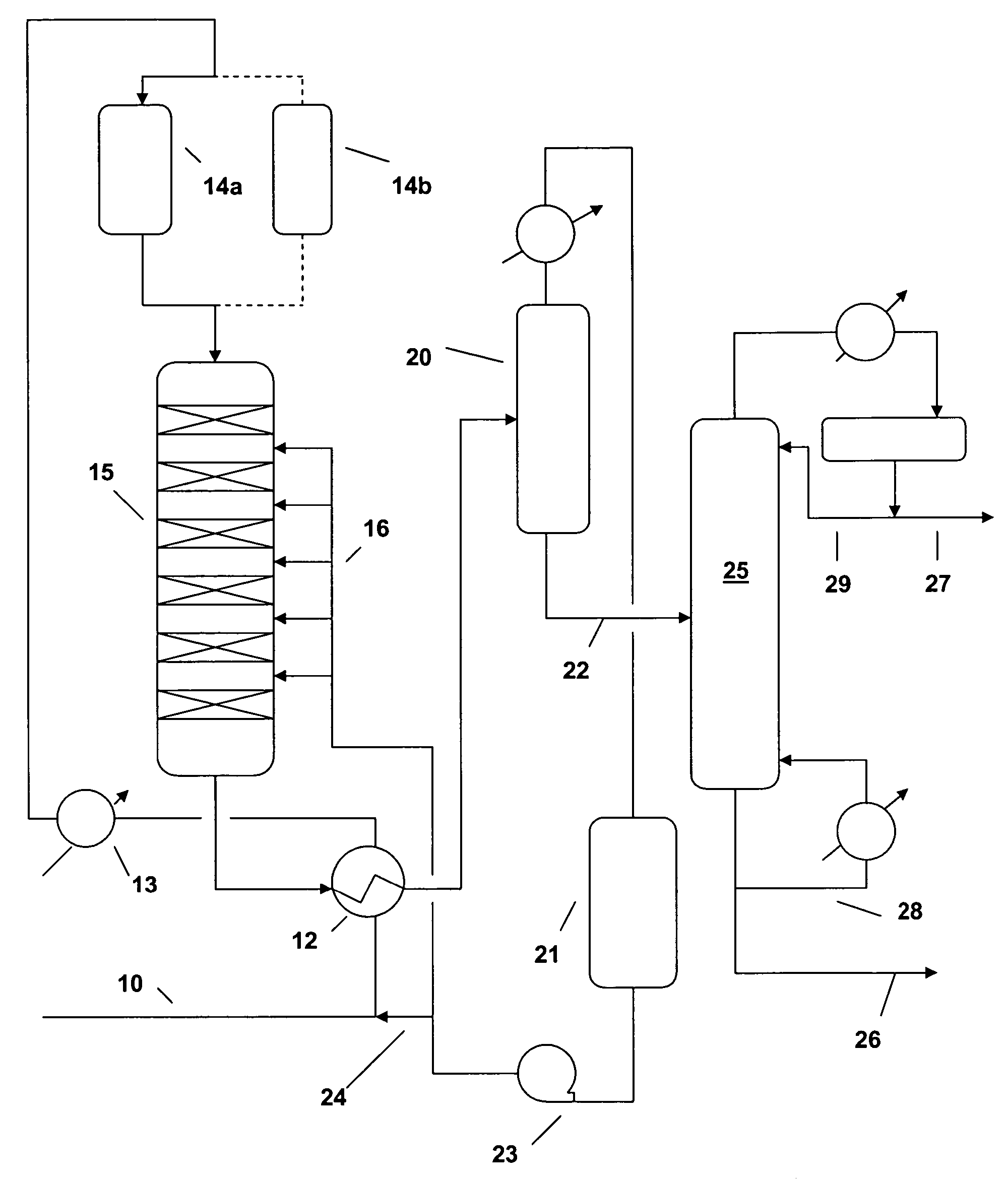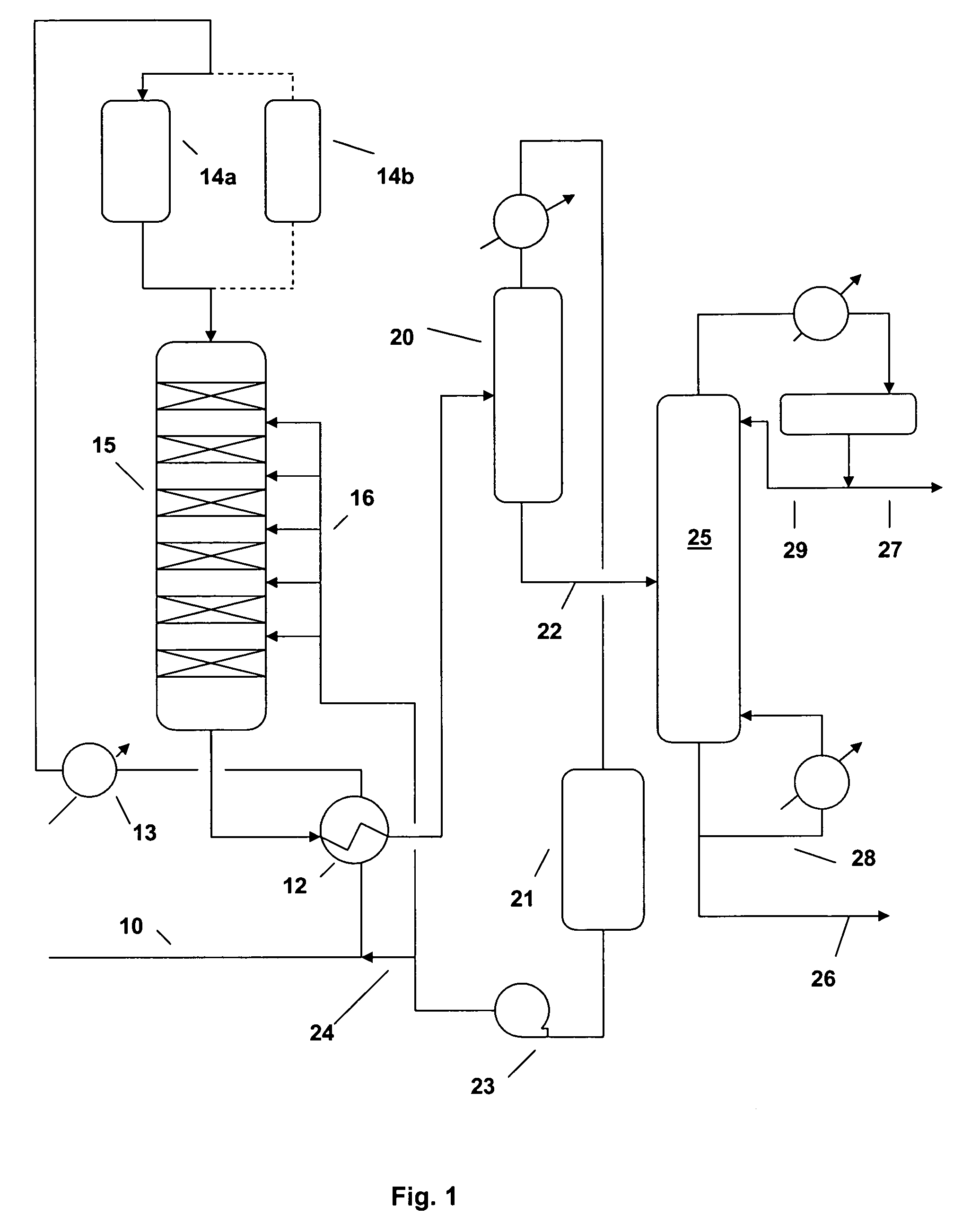Gasoline production by olefin polymerization
- Summary
- Abstract
- Description
- Claims
- Application Information
AI Technical Summary
Benefits of technology
Problems solved by technology
Method used
Image
Examples
example 1
2-Butene Oligomerization with Solid Phosphoric Acid
[0036] A commercial solid phosphoric acid (SPA) catalyst was sized to 14-24 mesh in a glove box. In a glove bag, one gram of this sized catalyst was diluted with sand to 3 cc and charged to an isothermal, down-flow, 9 mm (outside diameter) fixed-bed reactor. The catalyst was dried at 150° C. and atmospheric pressure with 100 cc / min flowing N2 for 2 hours. The N2 was turned off and reactor pressure was set to 5270 kPaa (750 psig) by a Grove loader. A 2-butene feed (containing 57.1% cis-butene, 37.8% trans-butene, 2.5% n-butane, 0.8% isobutene and 1-butene, 1.8% others) was introduced into the reactor at 60 cc / hr until desire reactor pressure of 5270 kPaa (750 psig) was reached. The reactor temperature was then ramped at 2° C. per minute to 170° C. During the temperature ramp, the feed flow was reduced to a desired level and kept at this level for 12 hours before data collection. Liquid products were collected at 50%, 70%, then 90% c...
example 2
2-Butene Oligomerization with A Binder-Free MCM-22
[0039] The catalyst was a binder-free, 1.6 mm quadrulobe extrudate containing 100% MCM-22. A 0.10 gram sample of this catalyst, chopped to 3 mm length, was tested for 2-butene oligomerization using the same procedure described in Example 1. Representative data are shown in Tables 3-5.
example 3
2-Butene Oligomerization with Alumina-Bound MCM-22
[0040] The catalyst was a 1.6 mm cylindrical extrudate containing 65% MCM-22 and 35% alumina binder. A 0.20 gram of this catalyst, chopped to 1.6 mm length, was tested for 2-butene oligomerization using the same procedure described in Example 1. Representative data are shown in Tables 3-5.
PUM
 Login to View More
Login to View More Abstract
Description
Claims
Application Information
 Login to View More
Login to View More - R&D
- Intellectual Property
- Life Sciences
- Materials
- Tech Scout
- Unparalleled Data Quality
- Higher Quality Content
- 60% Fewer Hallucinations
Browse by: Latest US Patents, China's latest patents, Technical Efficacy Thesaurus, Application Domain, Technology Topic, Popular Technical Reports.
© 2025 PatSnap. All rights reserved.Legal|Privacy policy|Modern Slavery Act Transparency Statement|Sitemap|About US| Contact US: help@patsnap.com


